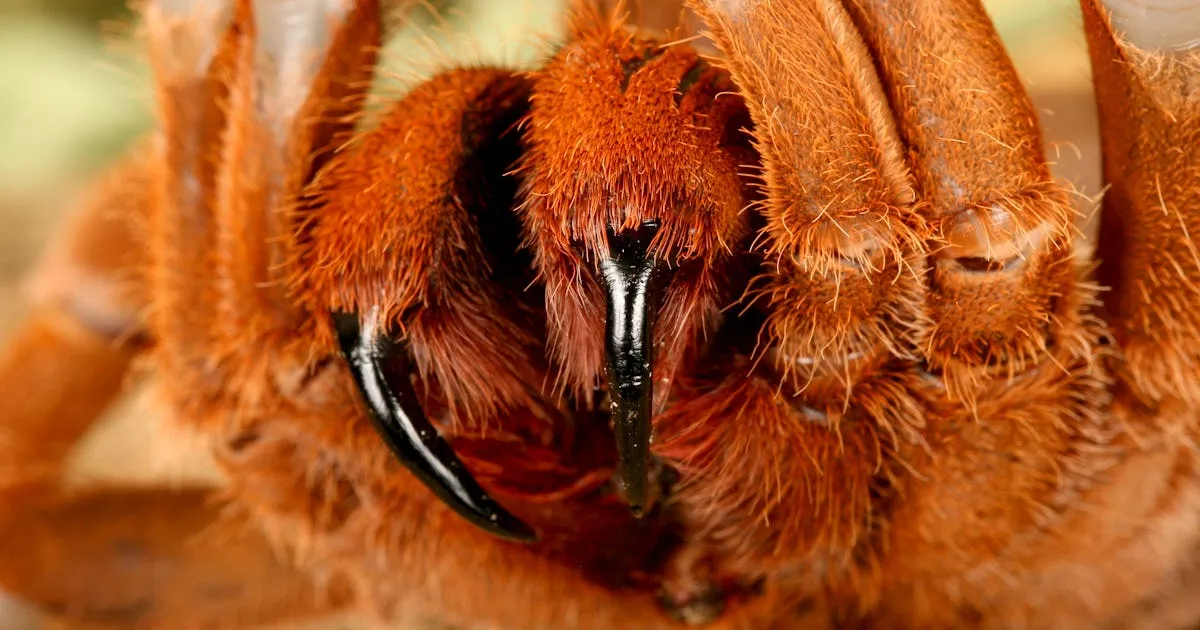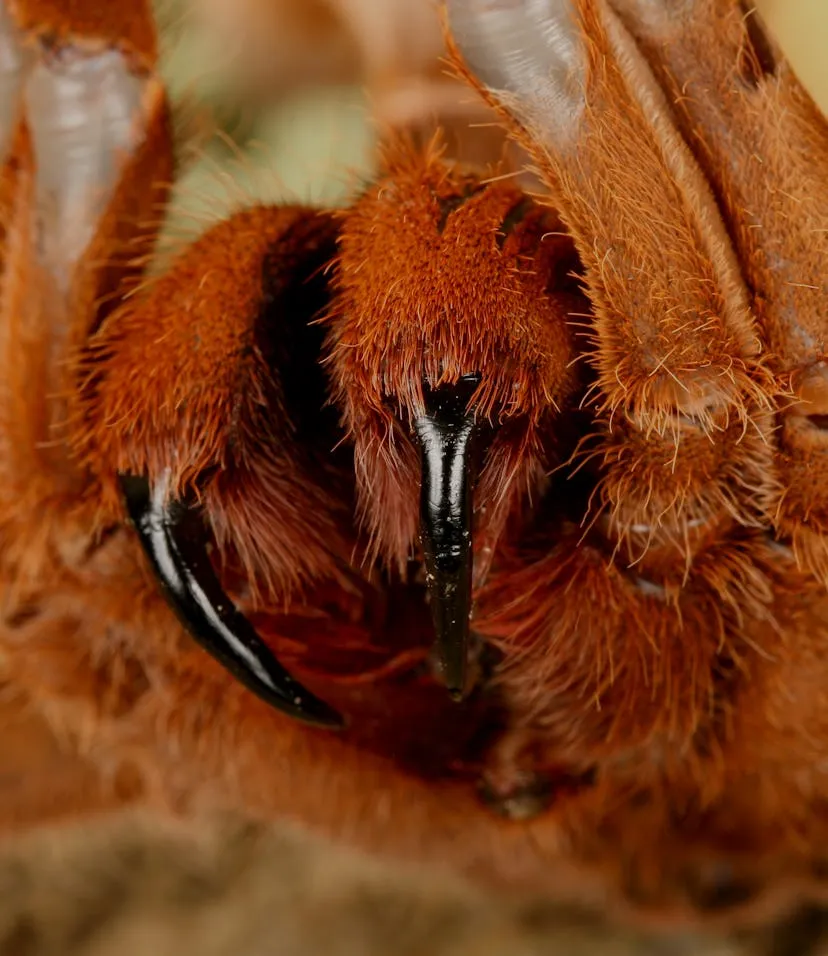The allure of tarantulas as pets or the fascination with their wild existence often leads to questions about their bites. While these large spiders can appear intimidating, understanding the true danger of a tarantula bite is crucial. This article will delve into the specifics of tarantula bites, exploring their potential risks, symptoms, and necessary first aid measures, debunking common myths along the way. Knowing the facts can help you approach these creatures with informed respect and manage any unexpected encounters effectively.
Are Tarantula Bites Dangerous?
Generally, tarantula bites are not considered life-threatening to humans. However, the level of danger can vary based on several factors. Most tarantula bites are comparable to a bee sting, causing localized pain, redness, and swelling. The venom itself is usually not potent enough to cause serious systemic reactions in healthy adults. Nonetheless, certain individuals, such as those with allergies or underlying health conditions, may experience more severe responses. It’s also important to consider the potential for secondary infections if the bite wound is not properly cared for. The severity of a tarantula bite depends on the interplay of the spider’s venom, the individual’s sensitivity, and the immediate care provided.
Understanding Tarantula Venom
Tarantula venom is a complex mixture of proteins, enzymes, and other compounds. Its primary purpose is to immobilize prey, such as insects and small animals. The venom’s effect on humans is significantly less pronounced because we have different physiological systems. The impact of the venom is primarily localized, affecting the bite area directly. While the venom isn’t typically highly toxic to humans, it can still cause discomfort and localized reactions.
Venom Composition and Effects

The composition of tarantula venom varies slightly between species, but common components include enzymes that break down tissue and peptides that affect nerve function. These compounds cause pain, inflammation, and sometimes muscle cramping at the bite site. The venom’s effects are often short-lived, typically subsiding within a few hours or days. However, the venom can sometimes trigger an allergic response in sensitive individuals, leading to more significant symptoms. This is a very complex area of study and a lot of research is being conducted.
Factors Influencing Bite Severity
Several factors can influence the severity of a tarantula bite. These factors are critical in determining the extent of symptoms and the required treatment. Considering these elements can help you manage the situation more effectively.
Size and Species
Larger tarantula species might inject more venom simply because of their size. Although the venom’s potency is not necessarily higher in larger species, the greater quantity injected could potentially lead to more significant localized effects. Also, certain species possess more potent venom than others. The overall impact of a bite often varies based on the specific tarantula species involved.
Individual Sensitivity

Individual sensitivity plays a crucial role in how a person reacts to a tarantula bite. People with allergies, especially to insect venom, may experience more severe reactions. Similarly, those with compromised immune systems might have a harder time recovering from the bite. Pre-existing health conditions can also influence the body’s response. It’s crucial for anyone bitten by a tarantula to monitor their symptoms closely, especially if they have known allergies or health issues.
Symptoms of a Tarantula Bite
Recognizing the symptoms of a tarantula bite is essential for providing appropriate care. Symptoms can range from mild and localized to more severe, depending on the factors discussed earlier. Understanding the various symptoms helps you react promptly and appropriately. The key is to monitor the bite’s progression and seek medical help if needed.
Immediate Symptoms
The immediate symptoms of a tarantula bite typically include localized pain, which can vary in intensity from a slight prick to a more intense burning sensation. Redness and swelling around the bite site are also common. Some individuals might experience itching or a feeling of numbness. These immediate effects usually appear within minutes of the bite and tend to peak within a few hours. Mild muscle cramping near the bite area can also occur.
Long-Term Effects

Long-term effects are rare, but they can happen. In most cases, symptoms will resolve within a few days. However, if a secondary infection develops at the bite site, it can lead to prolonged pain, swelling, and redness. Allergic reactions, while uncommon, might cause hives, difficulty breathing, or other systemic symptoms. Anyone who experiences such severe reactions should seek immediate medical attention. It is important to closely observe the bite for any changes.
First Aid for Tarantula Bites
Proper first aid can help minimize the effects of a tarantula bite and promote quicker healing. Immediate action is essential. Here’s how to respond effectively.
Cleaning the Wound
The first step is to clean the bite wound thoroughly with mild soap and water. This helps remove any remaining venom and reduces the risk of infection. Gently wash the area, ensuring that all debris is removed. Avoid harsh chemicals or strong antiseptics, as these can irritate the skin. After washing, gently pat the area dry with a clean cloth.
Pain Management

To manage pain, you can apply a cold compress to the bite site for 10-15 minutes at a time. Over-the-counter pain relievers, such as ibuprofen or acetaminophen, can also help reduce pain and inflammation. Avoid using aspirin, as it can increase bleeding at the bite site. Elevating the affected limb can help minimize swelling. These simple measures can significantly reduce discomfort.
Seeking Medical Attention
While most tarantula bites do not require medical intervention, it’s essential to know when to seek help. Monitoring the symptoms and recognizing potential complications is critical. When in doubt, always err on the side of caution and consult with a healthcare professional. Your health is always the top priority.
When to Seek Medical Attention
Seek medical attention if you experience severe symptoms, such as difficulty breathing, widespread swelling, or signs of an allergic reaction. If the bite site becomes increasingly red, swollen, and painful, it could indicate an infection. Any systemic symptoms, like fever, chills, or nausea, also warrant medical evaluation. If you’re unsure about the severity of the bite or concerned about your reaction, do not hesitate to consult a doctor or visit an urgent care clinic. Immediate medical care can prevent complications and ensure a full recovery.
Are Tarantulas Aggressive?

Tarantulas are generally not aggressive spiders. They are more likely to run away or display defensive behaviors before biting. They typically bite only when they feel threatened or provoked. Understanding their defensive behaviors can help you avoid encounters that might lead to a bite.
Defensive Behaviors
Tarantulas have several defensive mechanisms. One common defense is the flicking of urticating hairs from their abdomen. These hairs are irritating and can cause skin irritation and itching. Tarantulas also may raise their front legs, display their fangs, and hiss as a warning. Biting is often a last resort. Recognizing these defensive behaviors can help you avoid provoking a tarantula.
Bite Frequency
Tarantulas do not bite frequently. Most bites occur when the spider feels threatened, such as when handled roughly or when they feel cornered. In the wild, bites are relatively rare, primarily because tarantulas prefer to avoid conflict. Captive tarantulas that are handled improperly are at a greater risk of biting.
Preventing Tarantula Bites

Preventing tarantula bites involves understanding their behavior and taking appropriate precautions. Whether you encounter tarantulas in their natural habitat or keep them as pets, safety is paramount. By being mindful of their behavior and habitat, you can significantly reduce the risk of being bitten.
Handling Tarantulas Safely
If you handle a tarantula, do so with extreme caution. Handle tarantulas only when necessary, such as for cage cleaning or health checks. Avoid sudden movements that might startle the spider. Always supervise children and educate them on the correct way of handling. Use tools, such as long tongs or a clear container, to move the spider if needed. Do not try to pick up the spider with your bare hands unless you’re extremely experienced. Always wash your hands thoroughly before and after handling a tarantula.
Creating a Safe Habitat
For pet tarantulas, creating a safe habitat is crucial. The enclosure should be escape-proof, with a secure lid. The habitat should replicate the spider’s natural environment, with appropriate temperature, humidity, and substrate. Avoid placing the enclosure in areas where it might be easily disturbed, such as high-traffic areas or near loud noises. Regular cleaning and maintenance are essential to maintain a healthy and safe environment for both the tarantula and yourself.
Myth vs. Reality
Many myths surround tarantulas and their bites. Separating fact from fiction is important for accurate understanding and responsible behavior. Here are some common myths and the truths behind them.
Myth The venom is always deadly. Reality Tarantula venom is rarely life-threatening to humans. Myth All tarantulas are aggressive. Reality Tarantulas are generally not aggressive and prefer to avoid conflict. Myth All tarantula bites are the same. Reality The severity of a bite depends on various factors, including species, individual sensitivity, and the amount of venom injected.
In conclusion, while tarantula bites can be unpleasant, they are usually not dangerous. Knowing what to expect, how to respond, and when to seek medical attention can help you stay safe. By understanding the behavior of these fascinating creatures, you can appreciate them while minimizing any associated risks. Remember to respect their space, handle them with care if necessary, and always prioritize safety.
